Adelphi
Houses within 15km of this house
Displaying 61 houses.
Houses within 15km of Adelphi
Displaying 61 houses.
| House name | Description | |
|---|---|---|
| Ballyconnoe House | A summer home of the Creagh family, also known as Prospect Lodge. It was valued at £8 at the time of Griffith's Valuation when Cornelius Creagh held the house and townland in fee. Weir writes that an earlier house was in ruins in 1842, see M169 007, townland of Ballyconnoe North. It is no longer extant and a modern house has been built nearby. | |
| Loughburke | This house was originally the home of a branch of the Burke family. In the late 18th century it passed into the possession of the Lucas family who continued to reside there until the mid 19th century. C. and B. Lucas were in occupation in 1814 and Lewis records Lough Burke as the ancient seat of the Burke family ''now occupied by the Lucas family''. At the time of Griffith's Valuation the house was valued at £1 and James Casey was the tenant holding from the Woodwards. | |
| Ballybaun | Valued at £12.10 shillings at the time of Griffith's Valuation and occupied by Patrick Cahir senior, who held it from Francis Fitzgerald. It is labelled Ballybaun House on all of the Ordnance Survey maps. A house is still extant at the site. | |
| Kilcarragh | The home of the Fitzgerald family in the 18th century. Occupied by Austin Kerin in 1814, the Kerins and Fitzgeralds intermarried in the 18th century. The house was valued at £5.10 shillings at the time of Griffith's Valuation and was occupied by Richard Davis who leased it from Francis Fitzgerald. Demolished in the mid 20th century. | |
| Ballyshanny | A house on the McMahon estate occupied by Patrick Killeen at the time of Griffith's Valuation and valued at £11. Located close to the ruins of Ballyshanny Castle it is labelled Ballyshanny House on the 1st and subsequent editions Ordnance Survey maps. Ballyshanny is still extant. |

|
| Ennistimon House | In 1786 Wilson refers to this house at "Innistymond" as the seat of Edward O'Brien. Lewis writes in 1837 that Ennistymon Castle was originally a seat of the O'Brien family, descendants of the Earls of Thomond, but was then the residence of Andrew Finucane. By the time of Griffith's Valuation it had passed into Macnamara possession. The O'Brien, Finucane and Macnamara families had all intermarried. The house was valued at £28 in the mid 19th century and held by Captain Francis Macnamara in fee. It remained in Macnamara ownership until the mid 20th century and has been a hotel for many years. The hotel was the property of Mr Brendan O'Regan in the 1940s. |
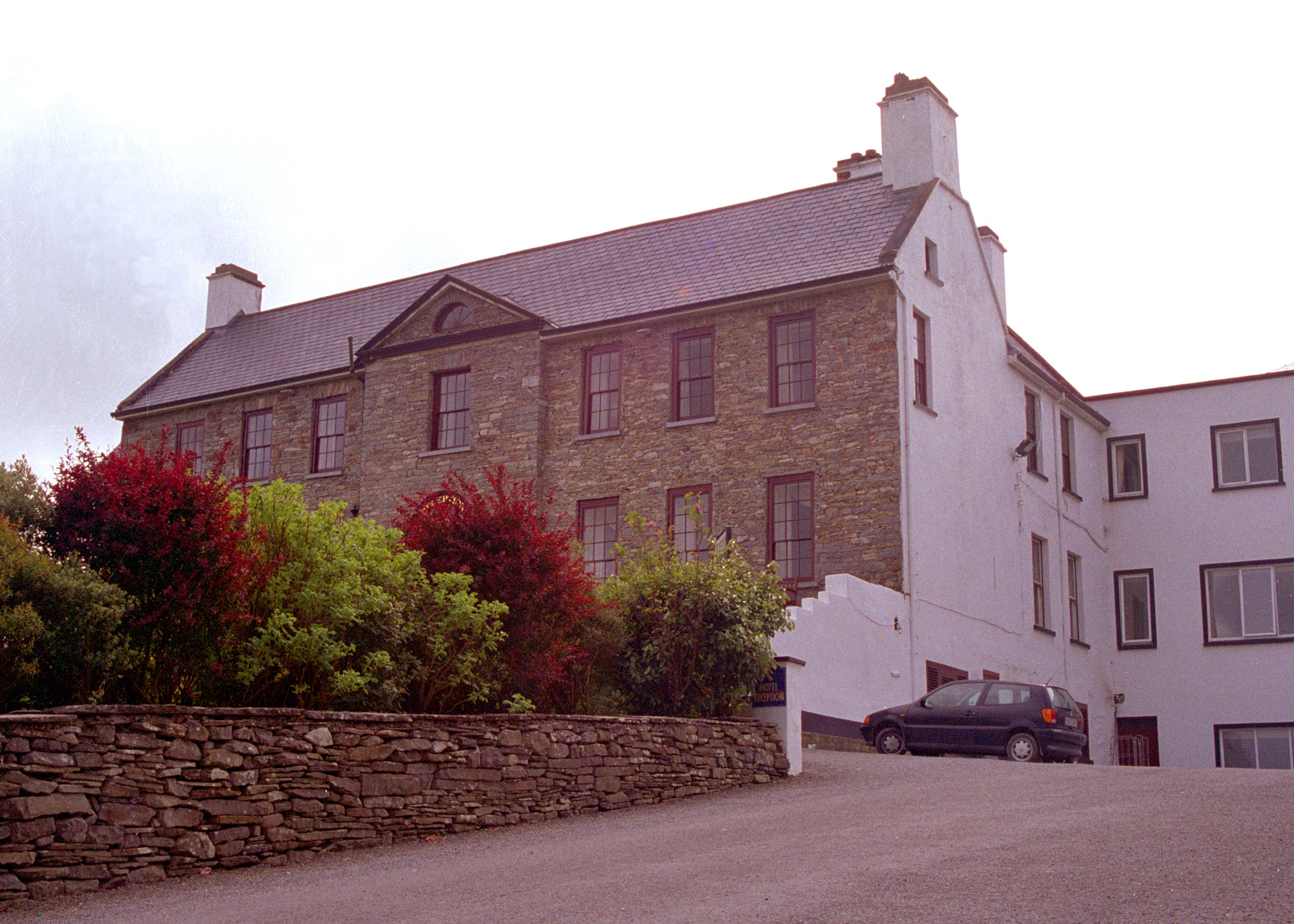
|
| Lehinch House | A house on the Stacpoole estate, possibly the house known as Lahinchy occupied by George Stacpoole in 1814 and by A. Stackpoole in 1837. At the time of Griffith's Valuation the house was valued at £10.10 shillings and was occupied by Thomas Moran who held it from Andrew Stacpoole. Weir writes that it was later a home of the Woulfe family. The house no longer exists, a modern bungalow occupies the site. Old walls and outhouses remain. |
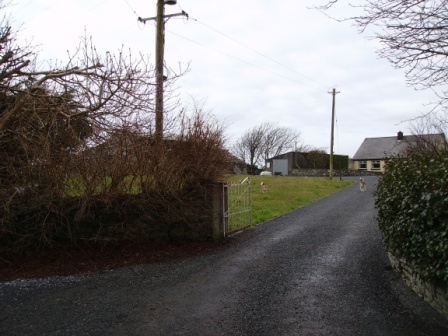
|
| Woodmount | A home of a branch of the Lysaght family in the late eighteenth and into the nineteenth century. In 1786 Wilson refers to it as the seat of Mr. Lysaght. Christopher Lysaght occupied the house in 1814 and G. F. Lysaght in 1837. By the time of Griffith's Valuation a Christopher Lysaght was residing there and he held the property valued at £6 from George Lysaght. | |
| Kilcornan | Originally a Comyn home, by the end of the 18th century Kilcornan was in the possession of the Lysaght family. James Davoren is recorded as resident in 1814. By the time of Griffith's Valuation the house was valued at £1.5 shillings. It is labelled as Kilcornan House on the 1st edition Ordnance Survey map but is not shown on the later 25-inch edition of the 1890s. | |
| Ballykeel | The home of the Lysaght family in the late 18th century. Weir writes that the house was built by George Lysaght who was resident in 1814. Lewis refers to Ballykeale as the seat of the Lysaght family 'now occupied' by Mrs Fitzgerald. The Irish Tourist Association file records that the house became the property of Henry Comerford in 1839. It was unoccupied at the time of Griffith's Valuation and held by Henry Comerford. It passed from him to the Blake Fosters. Francis O'D. Blake Foster was the owner in 1906. Mrs Blake Forster was resident in the 1940s and the Irish Tourist Association file lists the paintings in the house. |
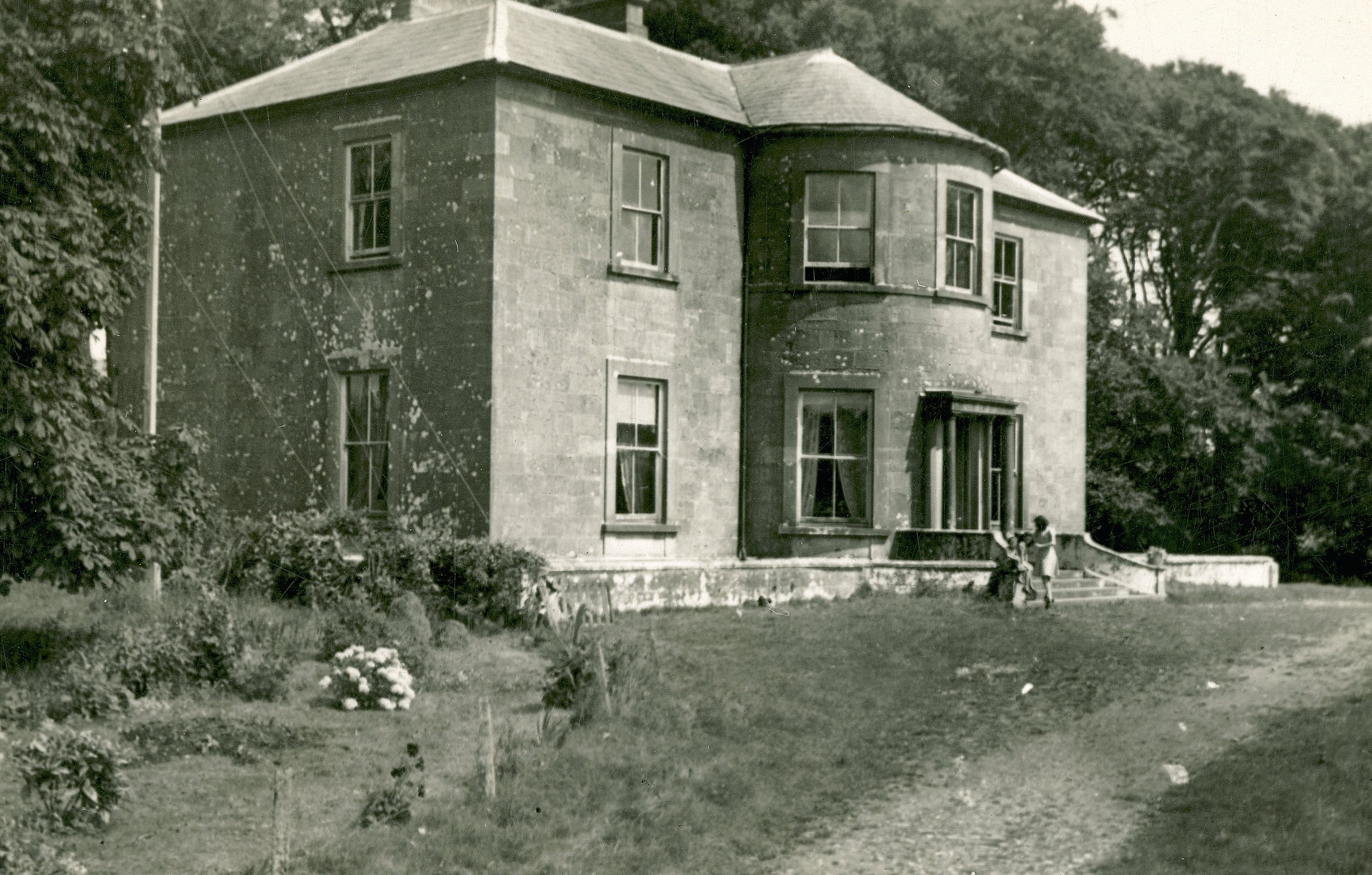
|
| Rockview | In the possession of the O'Loghlens for most of the 19th century. John Kerin occupied the house in 1814, R. O'Loghlen in 1837 and Bryan O'Loghlen at the time of Griffith's Valuation. A house is still extant at this site. | |
| Derryowen | A home of a branch of the Lopdell family in the 19th century held in fee and of their descendants the Blaquieres in the late 19th and 20th centuries. In July 1889 the notice announcing its proposed sale in the Land Judges' Court describes it as "a very good newly-built dwelling-house, with suitable out-offices". There is still an occupied house at the site. | |
| Rockforest | A home of Bindon Blood throughout the first half of the 19th century and later of his son, Bagot Blood, who died in 1897. It was held in fee by Bindon Blood at the time of Griffith's Valuation, when it was valued at £12. The house shown on the 1st edition Ordnance Survey map was replaced by a later house a short distance away. A house is still extant at this site. | |
| Elmvale | Originally an O'Hogan home which passed to the O'Briens through the marriage of Eleanor O'Hogan and Turlough O'Brien. Their son married Margaret Long. She married secondly Cornelius O'Brien of Birchfield. At the time of Griffith's Valuation the house valued at £15 was occupied by John O'Brien who held it from Sir Lucius O'Brien. Weir writes that the house was demolished circa 1965. In 1778 and 1786 this house, known as Cross, was occupied by a Lysaght. | |
| Inchiquin Cottage | A house on the Marquess of Thomond's estate, valued at £3 at the time of Griffith's Valuation and occupied by the Owens family in the first half of the 19th century. | |
| Clifden | This house was the home of the Burton family on the shore of Inchiquin Lough in the late 18th and 19th centuries. Wilson refers to it as the seat of Edward W. Burton in 1786. It was the residence of Lieutenant Colonel Marcus Patterson in the 1870s and in 1906. The house is still extant. |
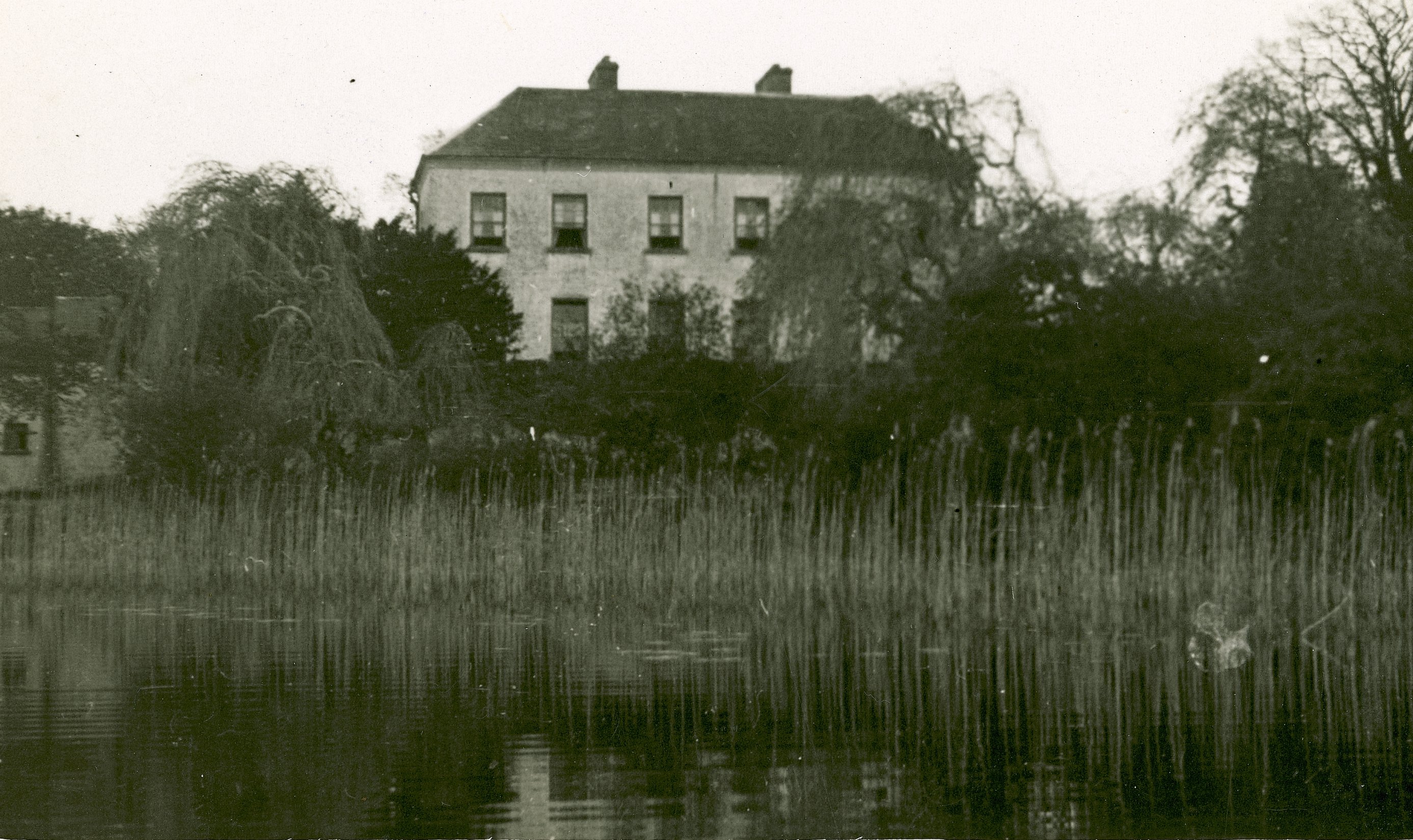
|
| Riverston | Weir writes that John Tymons was resident here in 1799. James Lysaght occupied the house in 1814 and Jonas Studdert in 1837. At the time of Griffith's Valuation Riverston was the home of Mrs Anne Bolton who held the house from James Timmins, a minor. | |
| Applevale | Neptune Blood of Applevale was the third son of William Blood of Roxton and Ann Chadwick and they lived at Applevale in the late 18th century. Their son William was murdered at Applevale in 1831 by the Terry Alts. Chartres Brew lived in the house in 1814 and George Davis in 1837 and in the 1850s. William Blood's mother was a Davis of Newcastle, county Galway.The house was leased to Michael Houlihan in 1870. This house is now a ruin. | |
| Roxton | One of the main homes of the Blood family from the mid 18th century. Wilson refers to it as the seat of W. Blood in 1786. The residence of the Reverend Frederick Blood in 1814, of Thomas Blood in 1837 and held in fee by his son, Frederick William Blood, at the time of Griffith's Valuation. By the 1870s Roxton was the home of William Darling Wilson. In ruins at the end of the 20th century. | |
| Cooga | A house on the O'Callaghan estate, inhabited by the Lingard family from at least 1837. Sold by the Lingards to the Hogans in 1922. | |
| Dromore | Occupied by Jonas Studdert, third son of Richard Studdert of Clonderalaw, in 1814. In 1795 Jonas married Mary Crowe of Dromore. The home of R. Crowe in 1837. Originally a hunting lodge Dromore became the main residence of the Crowes in the 1830s. The house was sold in 1936 and is now demolished. |
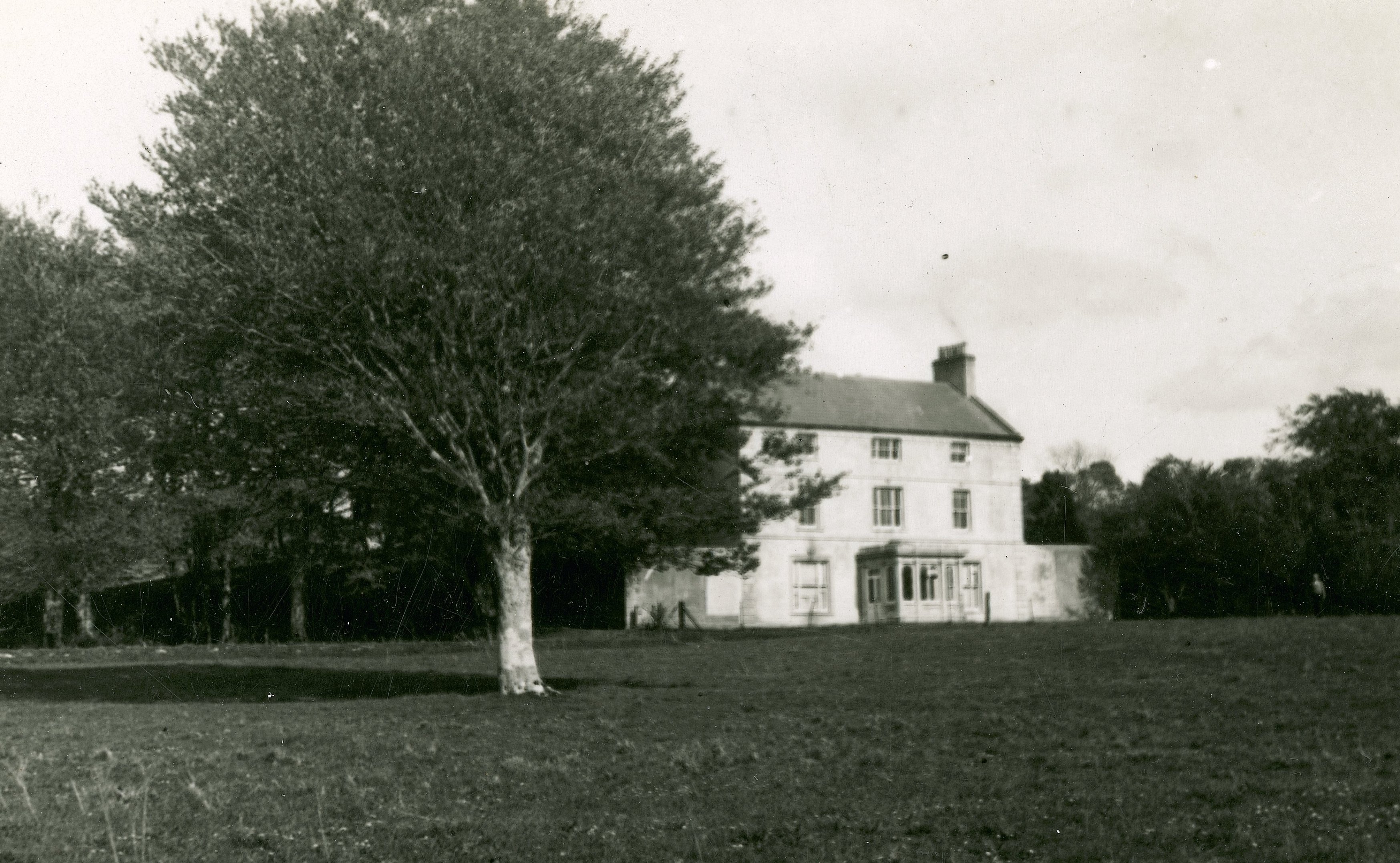
|
| Port | Home of the O'Loghlens in the latter part of the 18th century and first part of the 19th century. Hugh O'Loughlin was resident in 1814 and in 1837. The house was unoccupied at the time of Griffith's Valuation. Weir writes that the house and demesne were purchased by Jeremiah Kelly in the 1860s. |
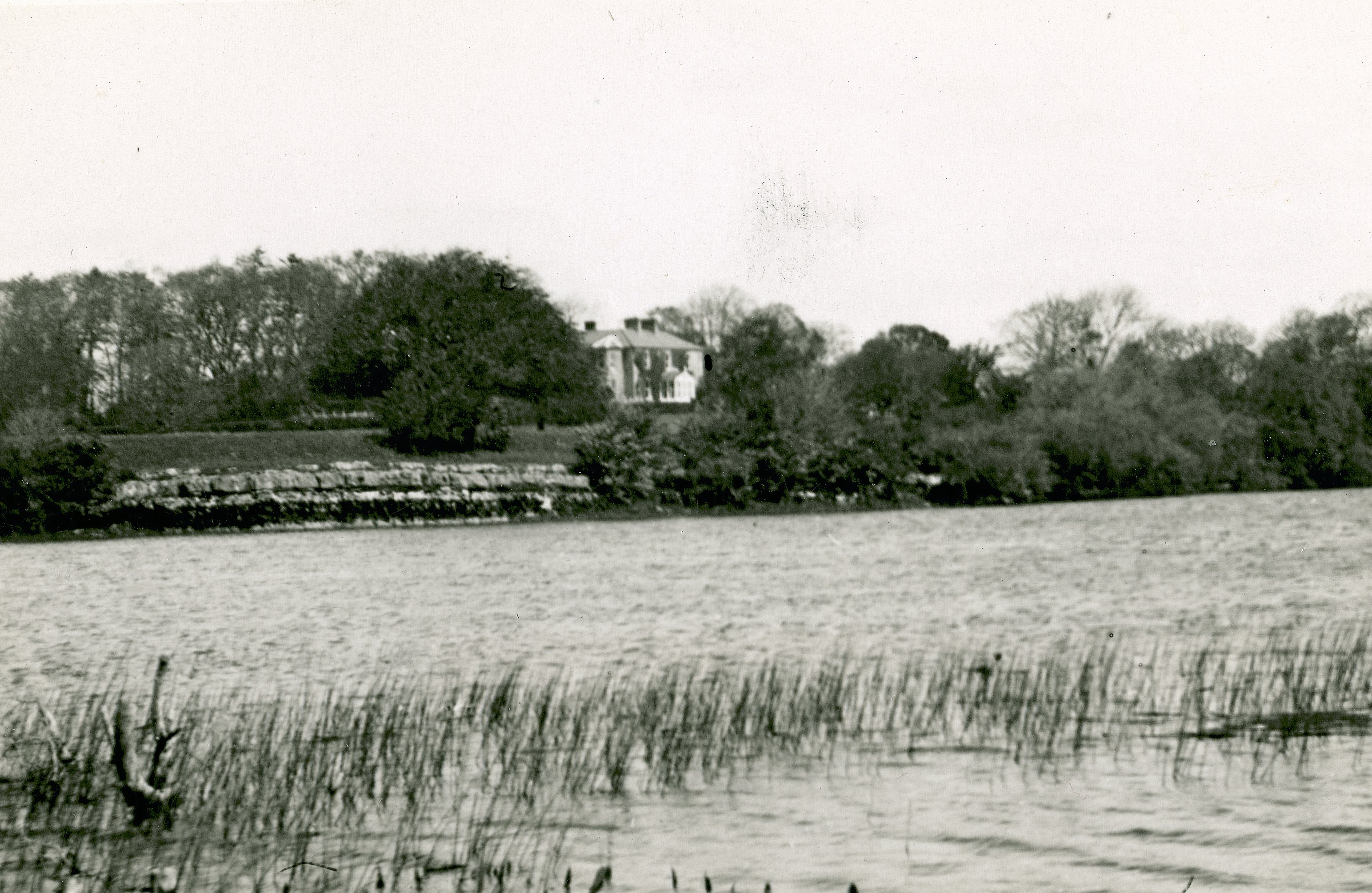
|
| Teernea | Hewitt Bridgeman, Member of Parliament for county Clare, lived here in 1837. By the time of Griffith's Valuation Myles O'Brien was leasing the house from Henry Dwyer. It was then valued at £8.10 shillings. | |
| Curragh House | A house on the Stafford O'Brien estate, the residence of the Faircloth family in the 19th century, valued at £9.10 shillings at the time of Griffith's Valuation. Accidentally burnt in the early 20th century. | |
| Carhoo | A part of the Synge estates from the 18th century, the residence of E. Synge in 1837. The house was occupied by John Rutherford at the time of Griffith's Valuation and valued at £12. A house is still extant at the site. |
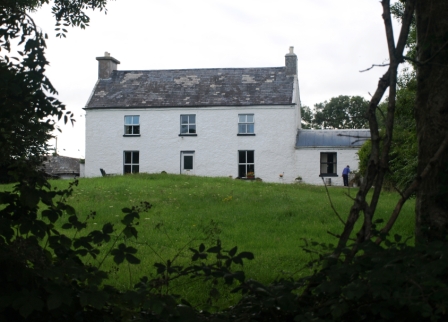
|
| Toonagh House | A late 18th century house, occupied by Mr J. O'Brien in 1814 and by C. O'Brien in 1837. By the time of Griffith's Valuation Cornelius O'Brien was leasing the house to Henry William Lucas and it was valued at £19. By the mid 1870s Cornelius O'Brien's son in law William Henry McGrath owned Toonagh. The house was demolished in the mid 20th century. | |
| Woodstock House | A 19th century house beside the golf course at Ennis, this house belonged to the Cullinan family at the time of Griffith's Valuation. A house and leisure centre have been constructed on the demesne lands. | |
| Bushypark | A house located to the west of the town of Ennis which belonged to the Macnamaras of Ennistymon for most of the 18th and 19th centuries. Occupied by David Power in 1814. The house and 68 acres were leased to Thomas Cullinan in the 1850s. Buildings at Bushypark were valued at £18 where William J. MacNamara held 68 acres of untenanted land. The house is still occupied. | |
| Shanvogh | Weir describes this house as 18th century. It was occupied by Timothy Cullinan at the time of Griffith's Valuation. He held it from the Marquess of Conyngham and it was valued at £12. The house is still extant. | |
| Beech Park | An early 19th century house, the home of Marcus Keane and his family in the 19th century. Griffith's Valuation shows that he held the property from the representatives of Michael Finucane and it was valued at £20. The house was still in the possession of Marcus Keane in 1906. The house is no longer extant. | |
| Hermitage | Another Keane residence near the town of Ennis, occupied by Francis Keane who held it from Marcus Keane at the time of Griffith's Valuation. In July 1857 Jonathon Gregg advertised the sale of the head rent of Hermitage and the surrounding 13 acres. Hermitage was advertised for sale again in October 1860 with 75 acres of town parks the estate of Christopher Plunkett, Dorothea Tottenham was the tenant. The sale rental records Francis Nathaniel Keane as the tenant. Hermitage was sold in the 20th century by the Keanes and was the property of John and Dorothy Madden in the 1980s. | |
| Cahircalla House | Occupied in the 18th century by the Crofts, England and Maguire families. The residence of David A. England in 1814 and of Charles Mahon in 1837. Griffith's Valuation shows that he held it from John Clancy. By the end of the 1860s Wainwright Crowe was in residence. Cahircalla Hospital now occupies the site, incorporating some of the earlier buildings. |

|
| Ashline Park | Robert Mahon son of Charles of Corbally and his wife Rebecca Crowe lived here in the mid 19th century. Griffith's Valuation shows the house valued at £18 and that it was held from the representatives of Michael Finucane. In the 20th century the house was the residence of the Catholic Bishop of Killaloe for some time. Weir writes that it was demolished circa 1968. | |
| Abbeyfield | A house in the town of Ennis, named Abbeyfield on the first Ordnance Survey map and Abbeyville by Samuel Lewis. In 1786 Wilson mentions that Lord Chief Justice Paterson had a residence in Ennis town. By the early 19th century it was being leased to Thomas Crowe. At the time of Griffith's Valuation the house was valued at £44 and was occupied by Wainwright Crowe who held it from Marcus Patterson. In the late 20th century it was used as a Garda station. |
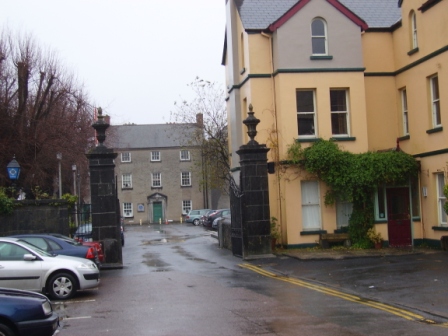
|
| Stamer Park | A home of the Stamer family in the 18th century which was occupied by Daniel Finucane, Secretary to the Clare Grand Jury, by the beginning of the 19th century. Daniel's son Michael was resident in 1837. By 1860 Captain William Stacpoole who was elected Member of Parliament for Ennis was living in the house. The house is still extant. |
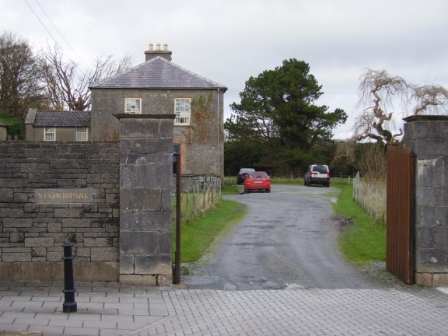
|
| Clonroad | A 17th century house in the possession of the Gore family from 1712 until 1852. The house was close to the River Fergus and had a brewery beside it. At the time of Griffith's Valuation the Gores were leasing the house and brewery to William Digges and the house was occupied by Henry Greene. In the 20th century the house which was rebuilt and extended in the mid 19th century belonged to the Knox and Merry families. | |
| Lifford House | Weir writes that in 1722 Francis Gore leased Lifford to Richard England. Patrick England was High Sheriff of the county in 1749. In 1786 Wilson refers to Lifford as the seat of Mr. England. By the early 19th century the Right Honourable Matthias Finucane was resident at Lifford House. Honoria Slattery, the common law wife, of Andrew Finucane, son of Matthias, occupied the house at the time of Griffith's Valuation. It was valued at £20 and was held from Sir Richard England. Weir writes that the house was demolished in 1965. | |
| Cragleagh | A Mahon house at the end of the 18th century, occupied by Thomas Pilkington in 1814 and by William Kenny at the time of Griffith's Valuation. Kenny held the property from Charles James/Janns and it was valued at £20. | |
| Ballyline | Weir writes that this house was also known as Millbrook. It was occupied by Henry Butler in 1814 but had reverted back to another branch of the family by 1837 when Austin Butler was the proprietor. Austin Butler held the house in fee at the time of Griffith's Valuation, when it was valued at £15. The representatives of Theobald Butler held the house and 428 acres of untenanted land in 1906. The house was demolished by the Land Commission before the 1940s and the land divided. | |
| Tooreen | Originally a residence of Augustine Fitzgerald, occupied by John Kerin in 1814 and by W. O'Connell in 1837. James Hynes was in possession of the house in the mid 19th century. He held it from Maurice O'Connell and it was valued at £10. It is now a ruin. | |
| Ballyallia | An 18th century house, occupied by Andrew Kerin in 1814. It then became the home of Andrew Stacpoole and was owned by William Stacpoole in fee in the mid 19th century when the buildings, which included a house, steward's house, office and gate lodge, were valued at over £41. By the end of the 19th century the Vere O'Briens were living in the house. The house was considerably altered in the 1970s. | |
| Cloonteen | A house in the townland of Cloonteen is named Ballyallia on the first Ordnance Survey map. It was valued at £30 and was held by John Enright in fee at the time of Griffith's Valuation, now a ruin. Weir called this residence Templemaley House, the name by which it is labelled on the 25-inch map of the 1890s. | |
| Brookville | Occupied by Charles Janns in 1814, by J. Mahon in 1837 and by Luke Brady who held the property from Anne and Eliza Griffin at the time of Griffith's Valuation when it was valued at £16. | |
| Newpark | This house was built in the mid 18th century by the Hickman family. By 1814 it was been leased to the Mahon family who included James Patrick 'The O'Gorman Mahon', associate of Daniel O'Connell. Occupied by William Mahon who held it from Thomas Persse in the mid 19th century. Purchased by the Barron family in the early 20th century. The house now provides guest accommodation. see http://www.newparkhouse.com/newpage1.htm |
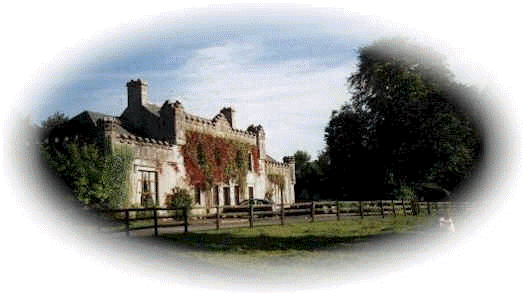
|
| Larch Hill | A house valued at £20 at the time of Griffith's Valuation and occupied by Captain Charles William Gore, fourth son of Francis Gore of Derrymore. He held the property from Lucinda Finucane. Later leased by the Finucanes to Charles Armstrong, fourth son of William Henry Armstrong of Mount Heaton and New Hall. A new house built in the 1980s now occupies the site. |

|
| Nutfield | A large three storey residence, Nutfield belonged to the Crowe family at the end of the 18th century and up to at least 1814 when it was the residence of Robert Crowe. Wilson refers to it and another house, which he calls Dromquin, as residences of the Crow family. He may be referring to Dromore House. By the mid 19th century Nutfield was the home of Sir Colman O'Loghlen who held it in fee. The buildings were valued at £40. The house is no longer extant. This house was also known as Drumconora. On the Taylor and Skinner map of 1778 it is named Nutgrove. | |
| Rosslevan | This house, close to the town of Ennis, was the residence of Francis Swyny in 1814. Rosslevan was occupied by Michael Kerin at the time of Griffith's Valuation. He held the property from the Reverend James Rynd. Rosslevan would appear to have been the home of the Davis family for some time in the 19th century. Members of the Davis family emigrated to Australia and called their new home Rosslevan. The sale rental of January 1875 records that the house had been "improved lately" and had eight bedrooms and three sitting rooms. Weir writes that Edward O'Brien, third son of the 14th Baron Inchiquin lived in the house before it was burnt in 1922. It is now a ruin. |
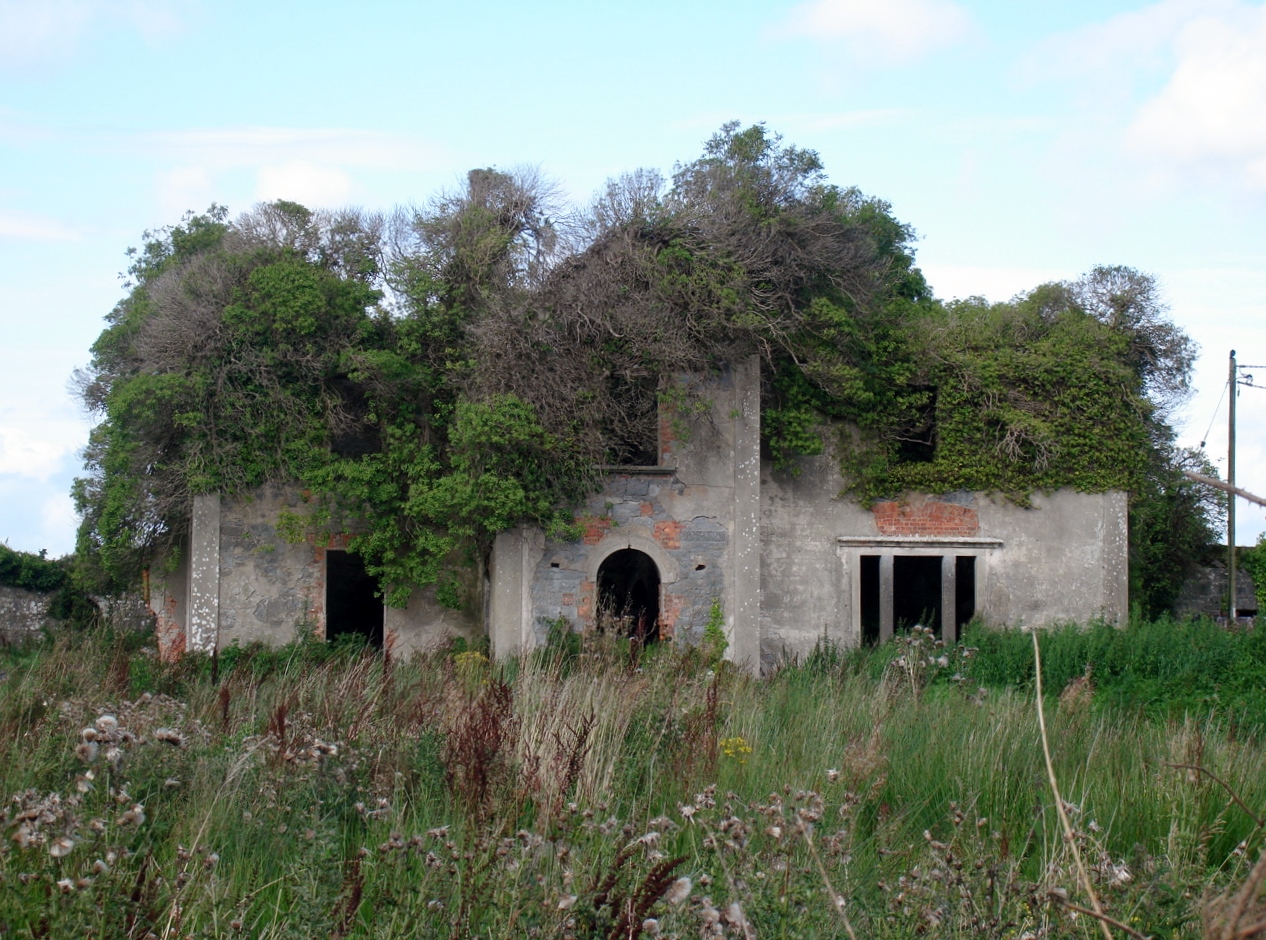
|
| Willbrook | This house was originally an Adams home, the Adams and Brews intermarried. In 1837 W.A. Brew lived here. At the time of Griffith's Valuation the buildings were valued at £5 and the house was occupied by Austin Moran and held from Lord George Quin. In the early 20th century it was the home of the Corbett family. Weir writes that the house was burnt down during the "Troubles". The present residence which was bought in the mid 20th century by Louis de Brocquy was constructed out of the stables. | |
| Harmony House | The residence of Patrick Maxwell Cullinan on the River Fergus in Ennis in the 1870s. Local sources indicate he afterwards moved to Cragleigh House. | |
| Holywell/Hollywell House | A Comyn residence, George Comyn married Margaret Lysaght of nearby Ballykeale in the early 19th century. In 1814 occupied by George Comyn and in 1837 by T. F. Comyn. By the time of Griffith's Valuation the house was unoccupied and valued at £5, James Gibson was the immediate lessor. The house is still extant and occupied. |
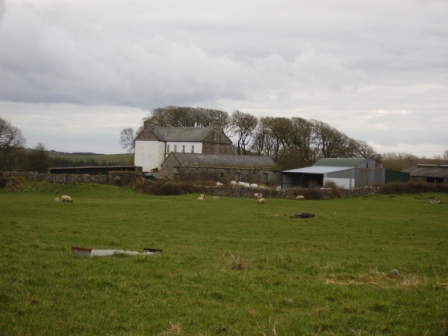
|
| Smithstown | Both Taylor and Skinner and Lewis refer to Smithstown as a seat of Viscount Powerscourt in 1778 and 1837. John O'Brien held the house and 117 acres from Edward Wingfield Stratford at the time of Griffith's Valuation. Weir writes that the house was demolished by the Land Commission in the 1940s.. | |
| Cragmoher | A house built in the mid 19th century by Major Charles Washington Studdert eldest son of Jonas Studdert. His son Jonas was born 1857. Burnt in the late 20th century. In 1906 buildings at Killeen were valued at over £17. |
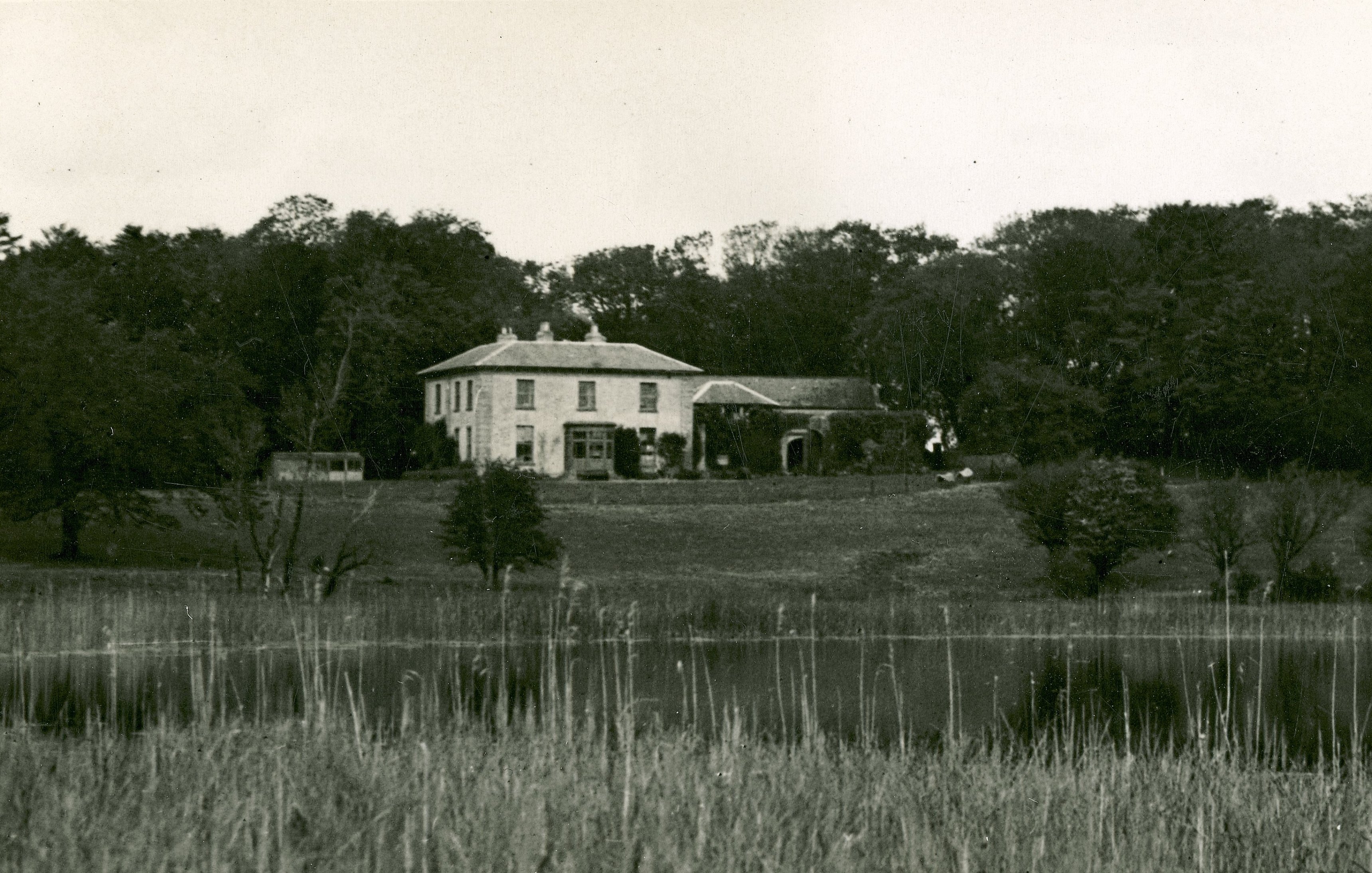
|
| Glencolumbkille House | This was an O'Brien home from at least the late 18th century. In 1837 Lewis described Columbkill Cottage as the "neat residence" of Terence O'Brien esq. Griffith's Valuation records Mary Anne O'Brien (the widow of Terence) as the occupier holding the property from John Kirwan. The buildings were valued at over £10. In the 1870s Morty O'Brien of Glencolumbkille owned 396 acres in county Clare. This is house is no longer extant. | |
| Trinaderry | A house erected in the 1870s as the residence of Andrew Enright. It is labelled Trinaderry House on the 25-inch edition Ordnance Survey map of the 1890s. A house and farm are still extant at this site. | |
| Fairy Hill | James O'Brien was living in this house in 1814 and it remained in the possession of O'Briens until the 1860s. Valued at £5 at the time of Griffith's Valuation when the Reverend Daniel Lynch was in residence. Occupied by the Lynch family in the 20th century. | |
| Rivoli | Weir describes Rivoli as a late 19th century house to which James Shannon's family moved from nearby Derry House in the second half of the 19th century. It was a home of the Hunt family in the early 20th century. | |
| Lismoher | Weir writes that this is an 18th century house. It was the home of the Armstrong family. Occupied by Michael Hynes in the 1850s and valued at £4. Hynes held the property from Edmond J. Armstrong. The house is still extant. |
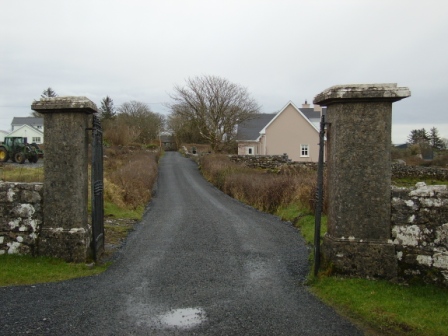
|
| Cappagh House | At the time of Griffith's Valuation occupied by John Curtin, valued at £12+ and held from the representatives of Stratford Kirwan. The house is no longer extant. | |
| Mollaneen House | Weir writes that this was an 18th century house. "Dysert" was occupied by Thady Brew in 1814. At the time of Griffith's Valuation George Fitzgerald held a house valued at £5 from Francis H. Synge in the townland of Mollaneen. Local sources suggest that this house was frequently occupied by the agent to the Synge estate. Weir writes that the roof of the house was removed in the mid 20th century. It has, however, since been restored and is now known again as Mollaneen House. | |
| Glenwilliam | The residence of James Blake Butler in 1837. Occupied by John McNamara in the early 1850s and held from Lord Fitzgerald and Vesci when it was valued at almost £5. Still extant and occupied. | |
| Cappahard House | In 1786, Wilson refers to Cappaghard as the seat of Mr. Lukey. Two houses are shown in this townland at the time of the 1st Ordnance Survey, Cappahard House and Edenview House. By the 1890s the 25-inch map shows that Edenview has become known as Cappahard House and the original house has gone. This townland was the property of Thomas Persse at the time of Griffith's Valuation and included a herd's house valued at £4. In 1901 it was occupied by the Glynn family. |

